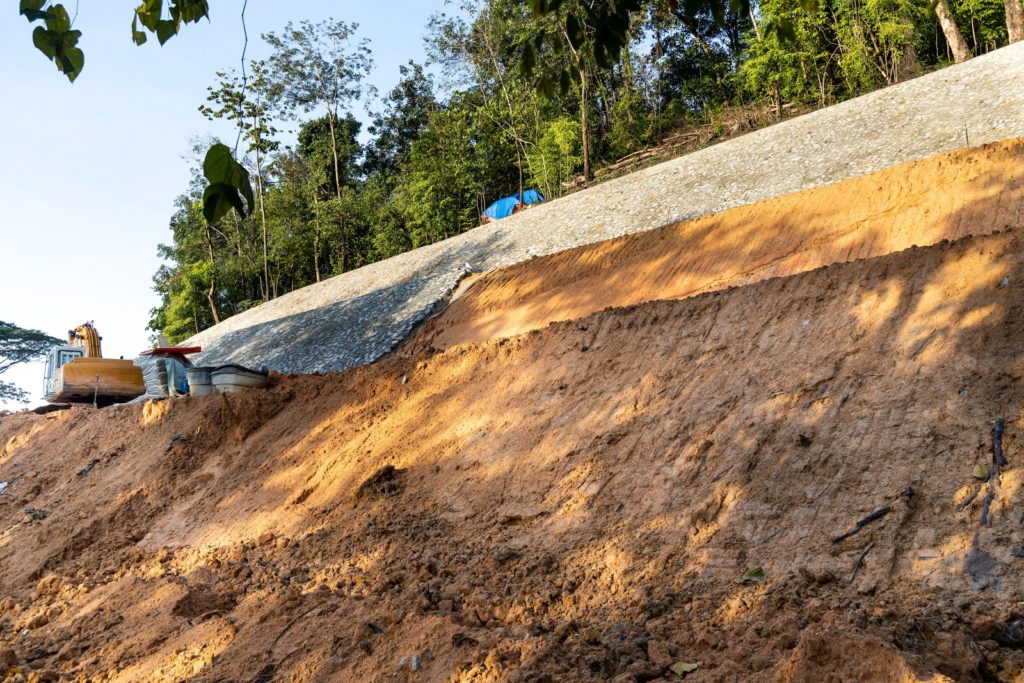
Every year, almost one billion tons of topsoil are wasted due to erosion. Soil erosion depletes valuable topsoil and creates pollution in streams, landslides, and increased flooding risk. This needs immediate erosion control.
Erosion control reduces water or wind erosion on land, in buildings, along coastlines, and in agricultural regions. Effective erosion prevention may assist in reducing surface runoff, which reduces soil loss, water contamination, and the loss of animal habitat.
Soil erosion is land degradation caused by the loss of its particles. It is divided into three stages: dislodgement, transit, and sedimentation. Their rate is affected by soil type, infiltration, aggregation, and ground cover.
Well-aggregated fields, for instance, are less susceptible, whereas bare soils are the most easily damaged. Cover crops, geotextile installation, perennial grasses, or terrace farming can help protect slopes from water erosion during rain showers.
There are both natural and man-made influences. Winds or rapid water runoffs in fields remove topsoil following heavy rains. However, farming also produces soil erosion when it is poorly managed.
Apart from natural forces, soil erosion happens due to irresponsible agricultural management or deforestation for urban growth, tourism development, road building, and other purposes.
This strategy entails planting crops with deep roots capable of holding the soil in place. This is especially critical in regions prone to erosion, such as streams, slopes, and riverbanks.
Vegetative barriers obstruct the passage of water due to their densely packed thick stems. These barriers allow water to move gently through them without eroding. Deep-rooted native plants such as wildflowers, woody perennials, and native prairie grasses are ideal for erosion management
Formulating and cultivating on a slope can be difficult and can quickly result in soil erosion. However, contour farming, in which farmers grow across a hill along contour lines, has the potential to save the situation.
This agricultural approach saves rainfall and reduces soil loss due to surface erosion. Crop rows, vehicle tracks over hills, and furrows can help achieve these goals. As a result, they serve as reservoirs for rainwater.
Geotextile walls, which are often used for stabilization, are another sustainable way of preventing erosion. They are made of porous fabrics that, when used with soil, can separate, filter, strengthen, protect, drain, and more.
They make it possible for water to drain away without bringing silt or runoff with it. They also contribute to the reduction of overall pollution. Geotextiles, whether non-woven or woven geotextiles, can also be used to prevent erosion on steep hills by providing a protective barrier.
Mulch components are laid down in this approach to cover the bare soil and protect it from being washed away.
Mulching is mostly utilized to provide erosion control during the initial phases of growing seedlings or bushes.
Furthermore, mulch preserves moisture and modulates soil temperature, reducing both fluctuations. Wood mulch is appropriate for gardens and landscapes, while organic mulches may nourish and protect your plants in the spring and fall.
The restoration of a damaged ecosystem and the conservation of existing ones guarantee adequate soil erosion management.
According to recent research, a well-planted and managed tree lowers erosion by 75%.
Furthermore, removing forest cover raises the danger of earth flow caused by a loss of forest canopy and a dense network of intertwined roots in the subsurface.
Eroded fields reduce agricultural production worldwide, and it is critical to identify places with soil erosion before the damage is severe.
Although most crop farmers have succeeded in slowing down the land-destructive activities on their farms, the issue remains a major cause of farmland loss on our planet. Moreover, unchecked erosion can have serious consequences, such as a landslide.
For further information regarding geotextile walls, including geotextile installation, feel free to get in touch with our specialists for a full consultation.
As one of the trusted names in Geosynthetics Malaysia, GSSB is dedicated to advancing engineering excellence through innovative, durable, and sustainable geosynthetic solutions. Our team works closely with industry partners to support infrastructure growth across transportation, environmental, and construction sectors.
Discover more about our journey, expertise, and commitment to quality by visiting our page.
Copyright © Gateway Structure Sdn Bhd (199401025111). All Right Reserved.